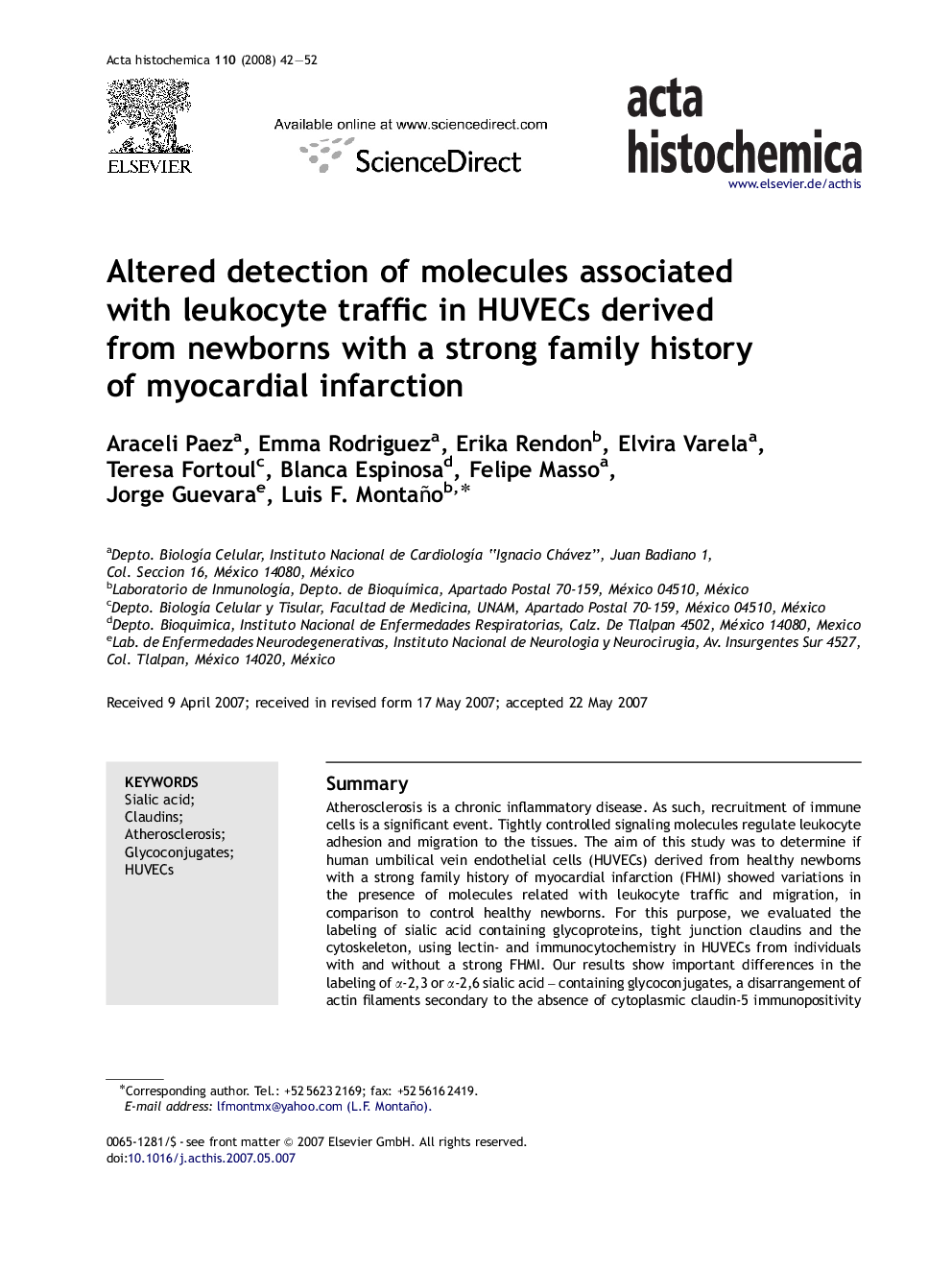| Article ID | Journal | Published Year | Pages | File Type |
|---|---|---|---|---|
| 1924242 | Acta Histochemica | 2008 | 11 Pages |
SummaryAtherosclerosis is a chronic inflammatory disease. As such, recruitment of immune cells is a significant event. Tightly controlled signaling molecules regulate leukocyte adhesion and migration to the tissues. The aim of this study was to determine if human umbilical vein endothelial cells (HUVECs) derived from healthy newborns with a strong family history of myocardial infarction (FHMI) showed variations in the presence of molecules related with leukocyte traffic and migration, in comparison to control healthy newborns. For this purpose, we evaluated the labeling of sialic acid containing glycoproteins, tight junction claudins and the cytoskeleton, using lectin- and immunocytochemistry in HUVECs from individuals with and without a strong FHMI. Our results show important differences in the labeling of α-2,3 or α-2,6 sialic acid – containing glycoconjugates, a disarrangement of actin filaments secondary to the absence of cytoplasmic claudin-5 immunopositivity and an increase in the binding of FHMI HUVECs to CD3+ Jurkat cells. It is possible that these differences relate to a predisposition for early appearance of atherosclerotic lesions.
